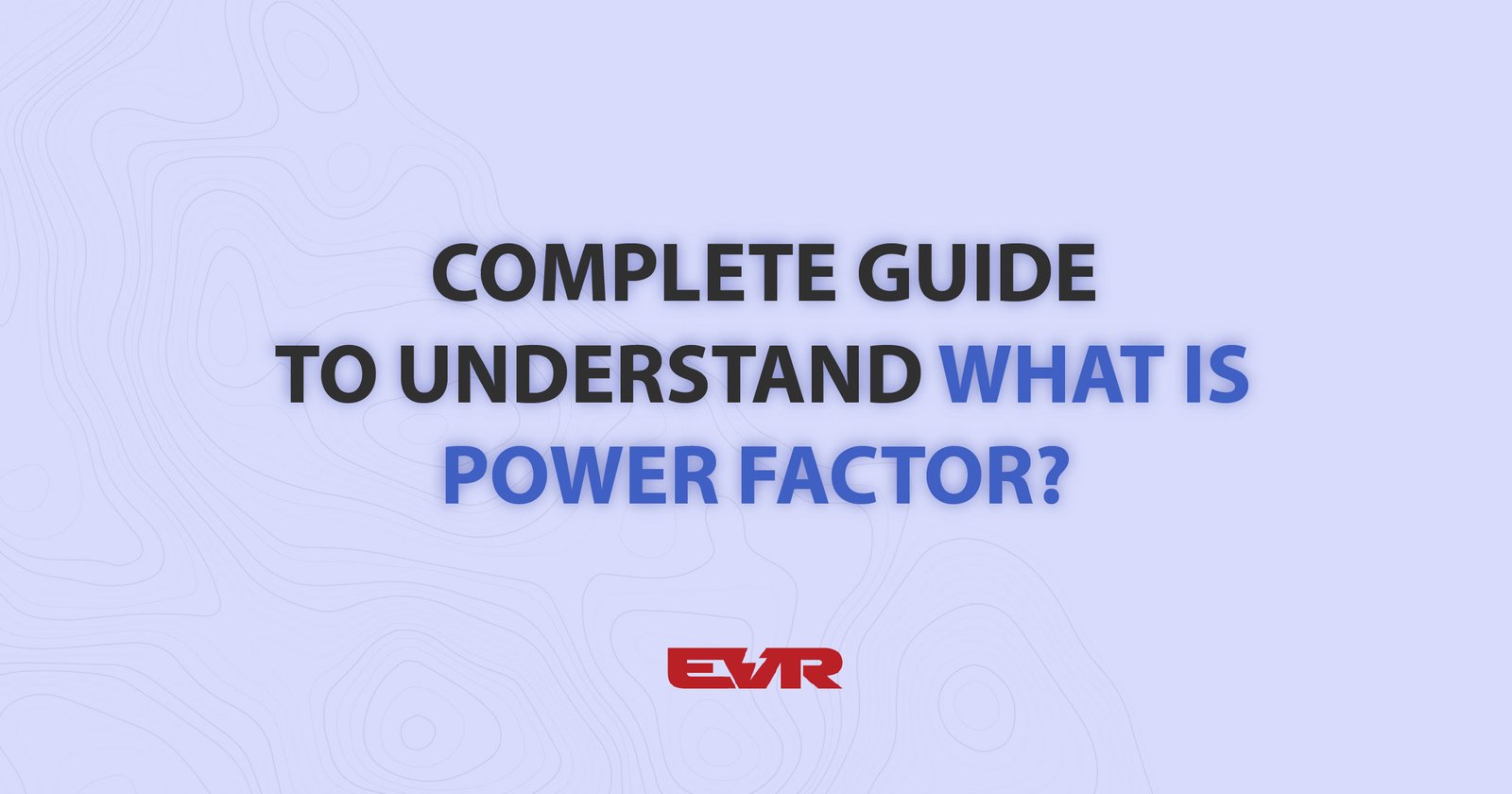Think of electricity like a pizza you’ve ordered. You want every slice to be enjoyed, not wasted. But here’s the catch in many electrical systems, not all the power you pay for actually does useful work. That’s where the power factor comes into the picture.
It quietly decides how efficiently your electricity is being used, how much shows up on your monthly bill, and even how smoothly your machines run.
In this guide, we’ll break down the power factor in simple, no-jargon language like explaining it to a friend over chai, not a classroom full of engineers.
Understanding Power Factor: A Simple Explanation ?
It might sound technical, but the power factor is simpler than it appears. It’s just a way of measuring how efficiently your electrical system uses the power it gets.
Think of it like fuel in a car, not all of it moves the car forward; some gets wasted as heat. Electricity works the same way.
Formula:
Power Factor (PF) = Real Power ÷ Apparent Power
- Real Power is the electricity that actually gets things done.
- Apparent Power is the total electricity supplied to the system.
The closer the power factor is to 1, the better your system is using electricity.
Why Power Factor Matters in Electrical Systems
Imagine trying to sip a milkshake through a clogged straw. You use more effort, but get less out of it. This is what occurs when the power factor drops too low.
A poor power factor makes your system pull in more electricity than it actually needs, which:
- Wastes energy
- Pushes your electricity bills higher
- Makes your machines work harder and wear out faster
But here’s the twist, a power factor that’s too high (over 1) usually means there’s overcorrection in the system, which can also create unnecessary stress on equipment and even lead to voltage issues.
In many industries, this problem often shows up in transformers that are already under heavy load. It helps to understand the Importance of a Transformer in Industrial Sector so you can see how the right setup keeps everything balanced and efficient.
What Causes Low Power Factor
Low power factor usually sneaks in when there are too many inductive loads like motors, compressors, or pumps running the show. They pull in extra reactive power that doesn’t do real work but still clogs the system. Old or overloaded equipment and messy wiring can add to the problem too. To tackle these issues, many facilities turn to Harmonic Mitigating Transformers in Industry: Benefits, which help reduce power disturbances and improve efficiency.
How It Affects Transformers
When the power factor drops, transformers have to handle more current than usual, and that extra load can create several problems:
- Excess heat builds up inside the transformer
- Energy losses increase, making the transformer less efficient
- Wear and tear accelerates, shortening its lifespan
- The entire system becomes less reliable and more prone to failures
Understanding Types of Losses and Efficiency in a Transformer can give you a clearer picture of why low power factor puts so much stress on transformers.
Tips to Boost Your Power Factor
The great part is fixing a low power factor isn’t rocket science. With a few smart adjustments, you can save energy, reduce electricity bills, and make your electrical system run more efficiently. A bit of preparation and the proper tools can help your system stay efficient and trouble-free.
- Add capacitor banks or correction panels: Think of them as little helpers that balance out extra power and keep the system running smoothly.
- Keep equipment in shape: Regular maintenance stops motors and transformers from drawing more current than needed. For easy tips, check Maintenance Tips for Transformers: Best Practices.
- Balance the load: Distributing electricity evenly across circuits stops any single section from being overloaded.
- Use voltage stabilisers: They act like a safety net, keeping voltage steady and protecting your equipment. Learn more about Use Servo Stabilizer for Optimal Voltage Regulation.
A few simple steps like these can improve power factor, extend transformer life, and make your entire system run happily and efficiently.
Take Control of Your Power Factor Today
A low power factor can quietly increase your electricity bills, overwork your machines, and wear down your equipment faster. Managing it properly helps lower energy use, cut costs, and keep your systems operating smoothly. It’s a small step that makes a big difference to the health and efficiency of your operations.
At EVR Power, we provide high-quality transformers and power solutions to help industries manage power factors with ease. Contact us today to improve your system’s efficiency, protect your equipment, and cut down on unnecessary energy losses.
FAQs
1. What is a good power factor?
A power factor close to 1 (like 0.95–1) is considered efficient and ideal for most systems.
2. What are the common causes of low power factor?
Low power factor usually comes from inductive loads, aging or overloaded machines, lack of maintenance, or wiring and harmonic issues.
3. Can the power factor be improved easily?
Yes, using capacitor banks, balancing loads, maintaining equipment, and voltage stabilizers can improve it effectively.
4. Why is power factor important for industries?
A good power factor reduces energy losses, lowers electricity bills, protects equipment, and improves system reliability.


0 Comments